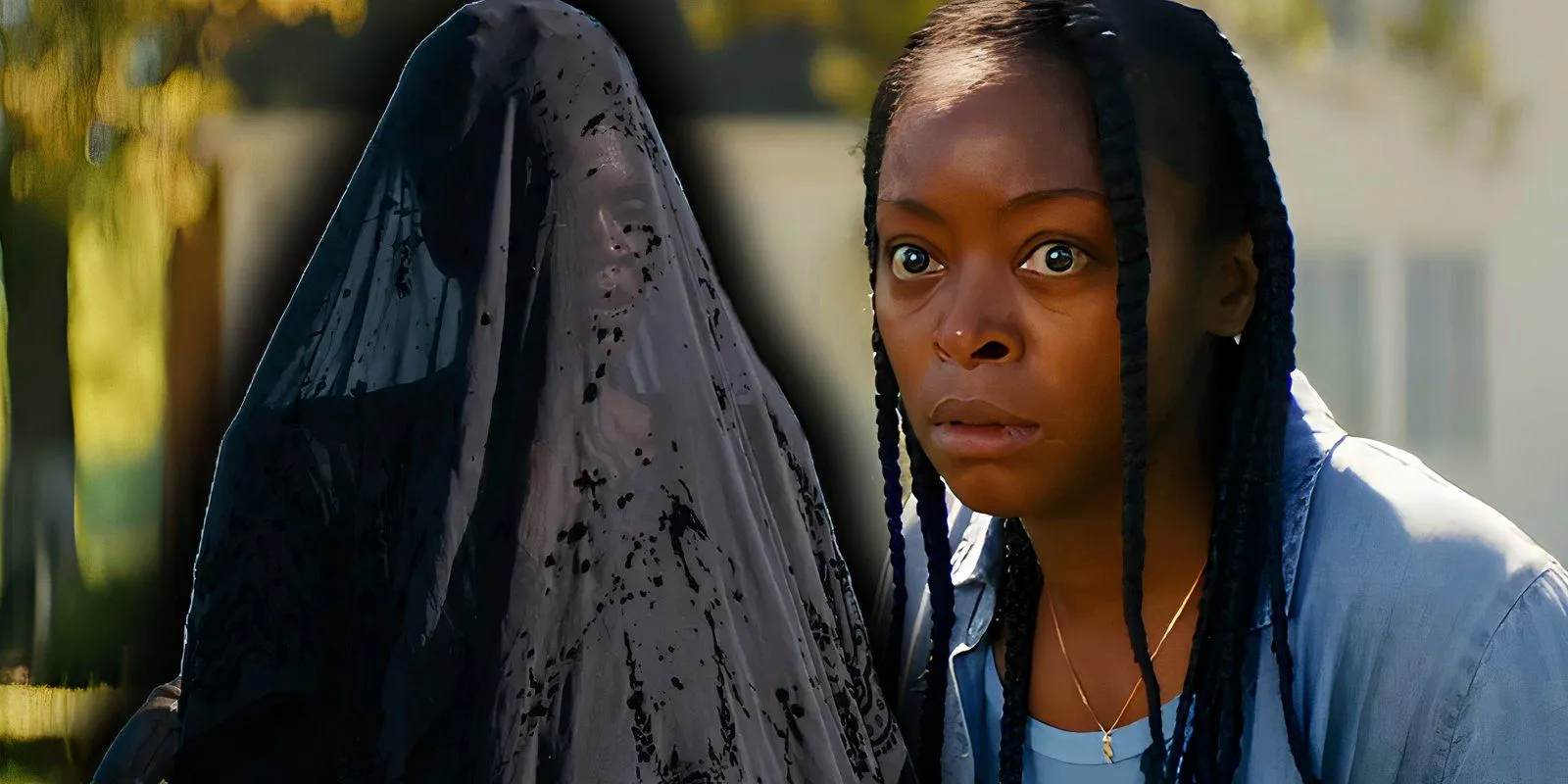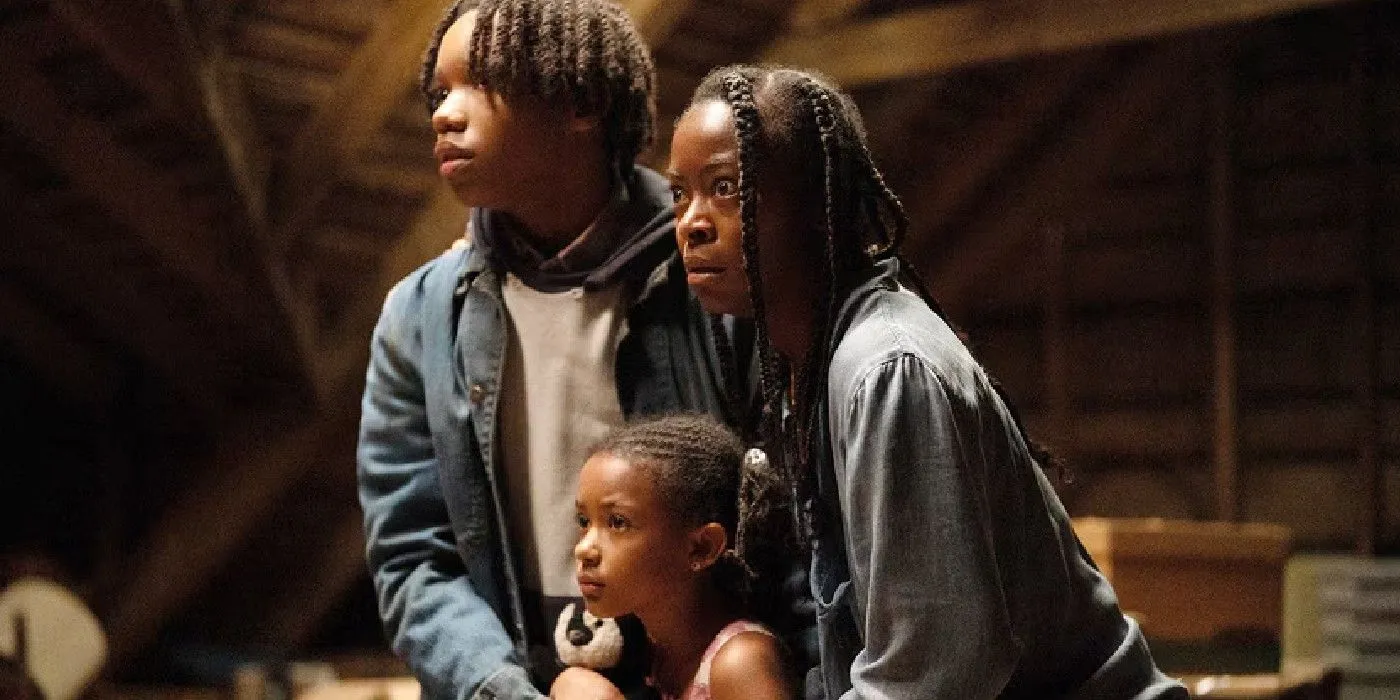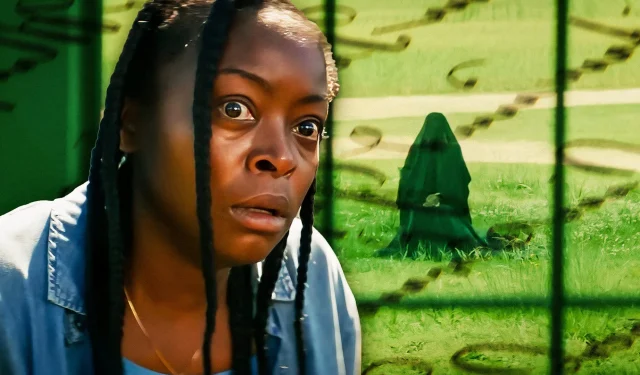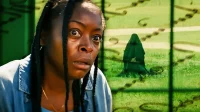This article explores the complex themes of depression and suicide as depicted in the film The Woman In The Yard.
Note: This analysis contains spoilers for The Woman In The Yard, currently screening in theaters.
The Ambiguous Ending of The Woman In The Yard
The film culminates with a powerful final shot featuring Ramona’s name reversed, shifting the overall tone dramatically. Centered around a recent widow and mother of two named Ramona, the narrative delves into her profound struggle with depression. This emotional turmoil manifests as a shadowy figure—”the woman”—who embodies Ramona’s darkest thoughts as she permeates their home and even the family’s environment.
Ultimately, this figure represents Ramona’s suicidal ideation, propelling her toward thoughts of ending her life. Such weighty themes have stirred significant debate since the film’s release, particularly regarding its conclusion. While the ending initially seems uplifting, the reversed writing hints at deeper, more troubling undertones. This article examines how the altered representation of names in the concluding moments reshapes our understanding of the storyline.
Significance of Backward Writing in Ramona’s Dreamscape
Altering Reality Through Backwards Writing

The film creatively employs backward writing as a cue to signal Ramona’s descent into a dream-like state, suggesting that the seemingly hopeful finale may not be genuine. Throughout the film, the shrouded figure repeatedly pulls Ramona into a distorted reality, where she can reminisce about happier times spent with her husband. This device imbues the scenes with a surreal quality, increasingly tinged with nightmare-like elements as the shadowy woman continues to encroach upon Ramona’s life.
In the film’s denouement, Ramona grapples with her tumultuous thoughts. Surprising audiences, she seemingly evades the urge to succumb to despair, reuniting with her children and returning home to find the lights back on and their dog safe. Yet, the revelation of a painting with mirrored text raises questions about the nature of this ‘happy ending’, pointing towards the idea that Ramona remains ensnared by the shrouded woman’s influence.
Interpreting Ramona’s Name Reversal as a Reflection of Her Struggles
Accepting Darkness or Remaining Trapped?

The backward spelling of Ramona’s name at the film’s conclusion suggests she has once again fallen victim to these mirror-like illusions. This twist invites various interpretations—it could symbolize that while Ramona’s mind fabricates an idyllic reunion with her family, the shadowy figure’s grip is leading her toward a tragic end.
This tonal shift raises poignant questions: is Ramona truly at peace with her shadowy thoughts, or has she merely been drawn back to her earlier hallucinatory experiences? The ambiguity embedded in the film’s conclusion casts a darker shadow over what initially appears to be a joyous reunion, leaving audiences pondering Ramona’s unresolved fate and the intricate nature of her struggles.


